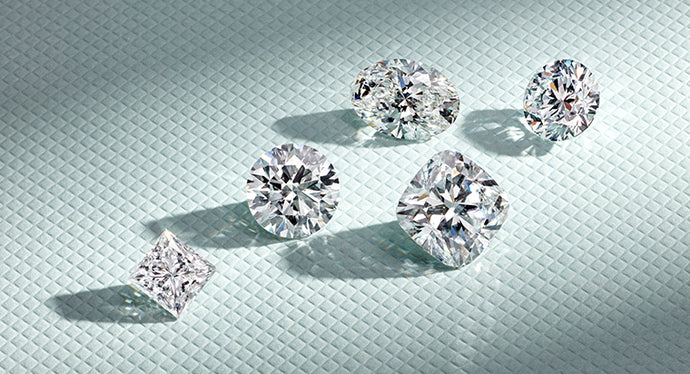Diamond shapes have long been admired for their unique beauty and versatility, whether in the realm of jewelry, design, or architecture. From engagement rings to contemporary decor, diamonds’ distinct forms offer numerous advantages. This article explores the many benefits of Ventajas de formas de diamantes, highlighting their appeal and functionality in various contexts.
The Timeless Beauty of Diamond Shapes
One of the primary advantages of diamond shapes is their timeless beauty. Unlike other cuts or shapes, diamond shapes have a classic elegance that never goes out of style. The brilliance of a well-cut diamond is due to its ability to reflect light in a captivating manner, making it an ideal choice for those seeking an accessory that combines both glamour and sophistication.
The versatility of diamond shapes also contributes to their enduring popularity. Whether it’s the round, princess, emerald, or cushion cut, each diamond shape offers a unique aesthetic. This allows individuals to select the shape that best complements their personality or design vision. The timelessness of these shapes ensures that they remain relevant across generations, maintaining their appeal for decades.
Enhanced Sparkle with Diamond Shapes
Another significant advantage of diamond shapes is their ability to enhance sparkle. The number of facets in a diamond’s cut plays a critical role in how light interacts with the stone. Diamonds with more facets, like the round brilliant shape, are designed to maximize light return, creating an exceptional sparkle. This is one of the key reasons why diamond shapes like the round brilliant are so popular for engagement rings and other fine jewelry.
Even less complex shapes, like the emerald cut or the princess cut, exhibit a unique sparkle due to their geometric form. While they may not possess as many facets, the clean lines and angles of these shapes still allow the diamond to reflect light in a way that highlights its clarity and brilliance. The design of diamond shapes directly influences the overall visual appeal of the gemstone, making them a favored choice for those who appreciate sparkling jewelry.
Versatility in Jewelry Design
The versatility of diamond shapes offers another compelling advantage. These shapes can be seamlessly incorporated into various types of jewelry, including rings, necklaces, earrings, and bracelets. Whether set in a classic solitaire or part of a more intricate design, diamond shapes allow for a wide range of creative expression.
For instance, the round brilliant shape, with its symmetrical form, works beautifully in any setting, while the princess cut is known for its sharp, modern appeal. On the other hand, shapes like the marquise or oval cut provide a sense of elegance and elongation, making them perfect for statement pieces. The variety of diamond shapes means that there is a design suitable for every taste, occasion, and style, allowing individuals to create personalized and timeless pieces.
The Advantage of Diamond Shapes in Engagement Rings
When it comes to engagement rings, the advantages of diamond shapes are especially significant. The choice of shape can reflect the personality and style of the wearer while also enhancing the overall look of the ring. For example, a round brilliant diamond shape maximizes sparkle, making it a perfect option for someone who desires a dazzling piece. Alternatively, the cushion cut shape, with its rounded corners and soft edges, offers a vintage charm that appeals to those with a classic or romantic taste.
The decision regarding diamond shapes for engagement rings also affects the setting and band design. For instance, a diamond with an elongated shape, like the oval or emerald cut, can create the illusion of longer fingers, which is an attractive feature for many. Additionally, the shape of the diamond can influence the size and complexity of the setting, ensuring that the stone is both secure and aesthetically pleasing.
Durability of Diamond Shapes
One of the often-overlooked advantages of diamond shapes is their durability. lab grown diamonds are one of the hardest natural materials on Earth, and their toughness is enhanced depending on the shape. For example, the round brilliant diamond is known for its ability to withstand wear and tear due to its well-balanced facets. Shapes like the princess cut or emerald cut, which feature sharp corners, may be more prone to chipping but can be set in protective settings to minimize the risk.
The durability of diamond shapes also extends to their function in other industries, such as architecture and design. Diamond-shaped patterns are frequently used in tiling, flooring, and other materials, where their strength and visual impact are highly valued. The geometric symmetry of diamond shapes ensures their resilience in both decorative and structural applications.
Diamond Shapes and Their Role in Investment
The advantages of diamond shapes are not limited to aesthetics and functionality; they also play an important role in the investment value of diamonds. Certain shapes, such as the round brilliant cut, are highly sought after and tend to maintain or increase in value over time. This is due to their popularity and the demand for their sparkling brilliance. Additionally, diamonds of specific shapes may appeal to collectors or investors looking for rare or vintage cuts.
Shapes like the old mine cut or cushion cut are often considered more valuable in the antique market, as they are less commonly found in modern pieces. Whether used in personal collections or as part of an investment strategy, the shape of the diamond can significantly influence its potential for future value appreciation.
Conclusion
The advantages of diamond shapes are undeniable. From their timeless beauty and enhanced sparkle to their versatility in design, these shapes offer something for everyone. Whether used in jewelry, architecture, or investment, diamond shapes continue to captivate with their enduring charm and practical benefits. By understanding the significance of diamond shapes, individuals can make more informed decisions when selecting diamonds for various purposes, ensuring they choose the shape that best meets their needs and desires.

